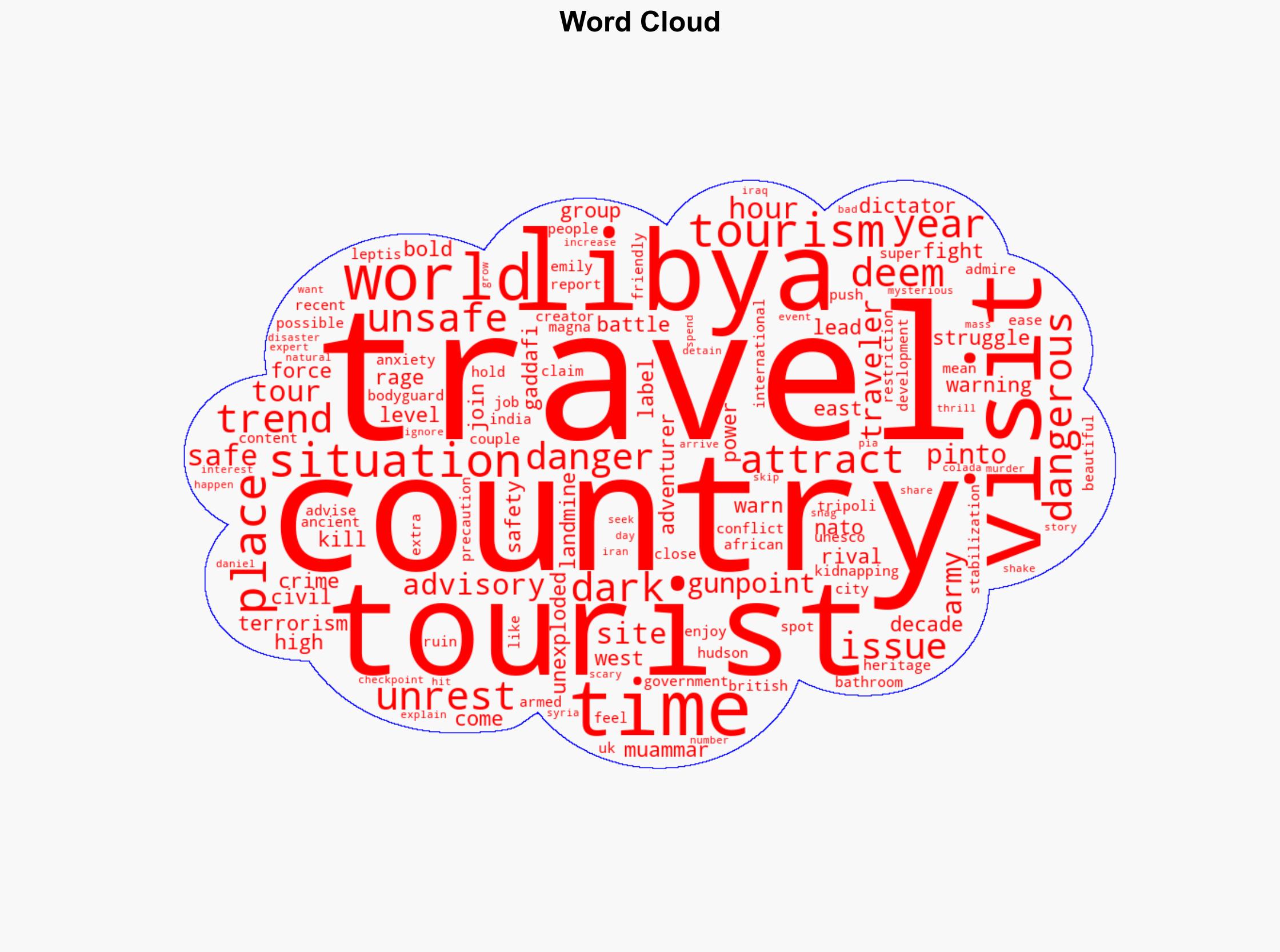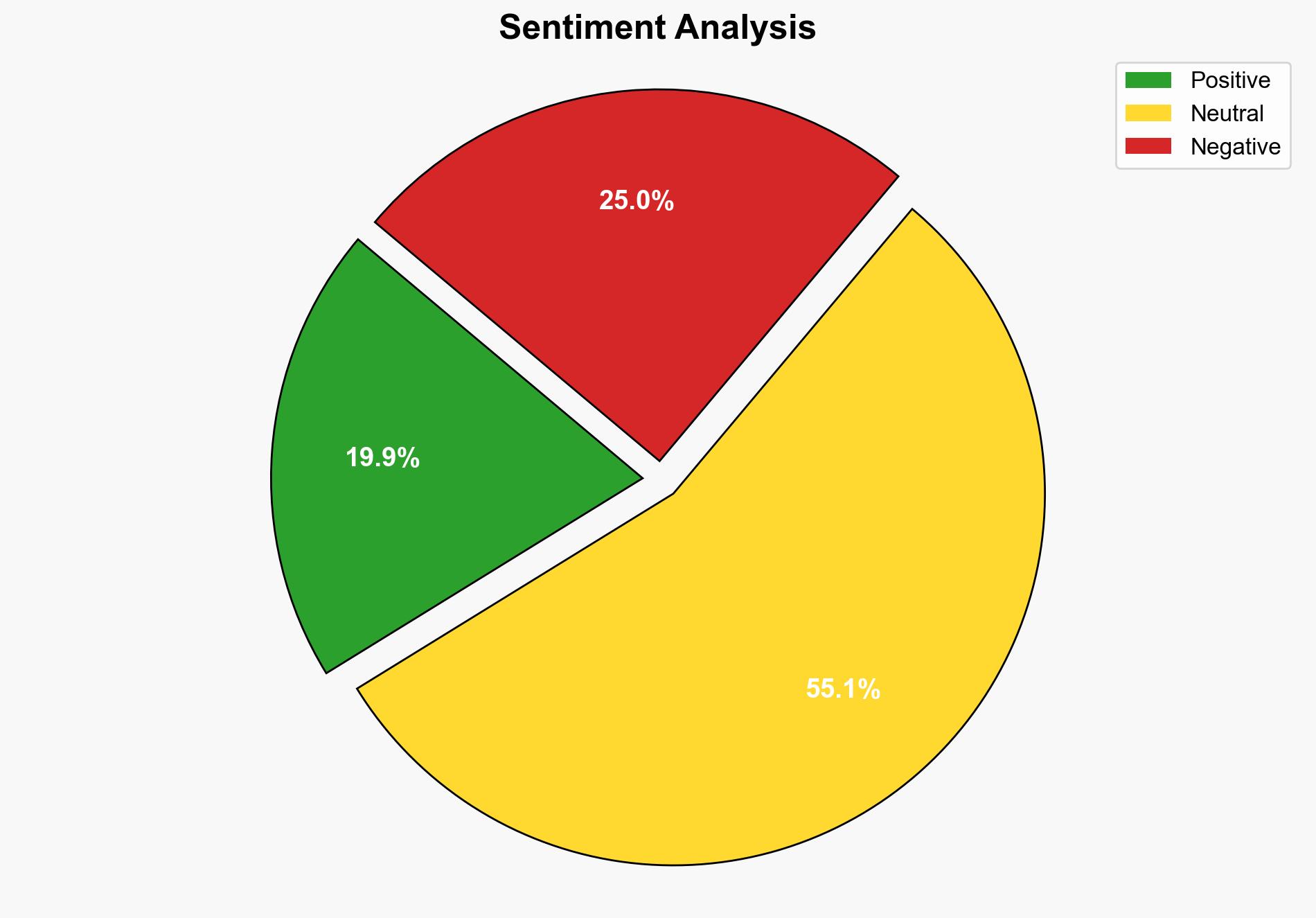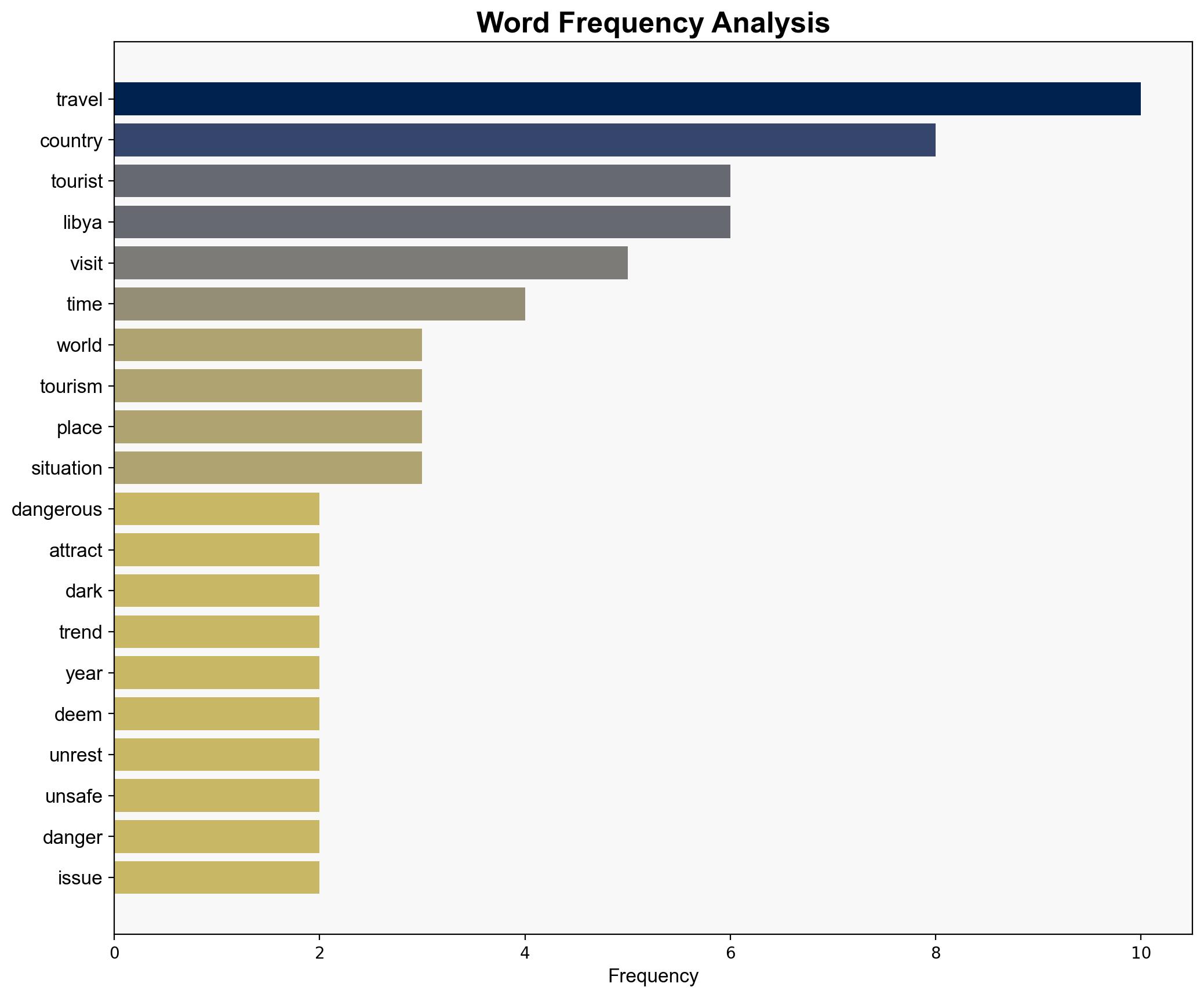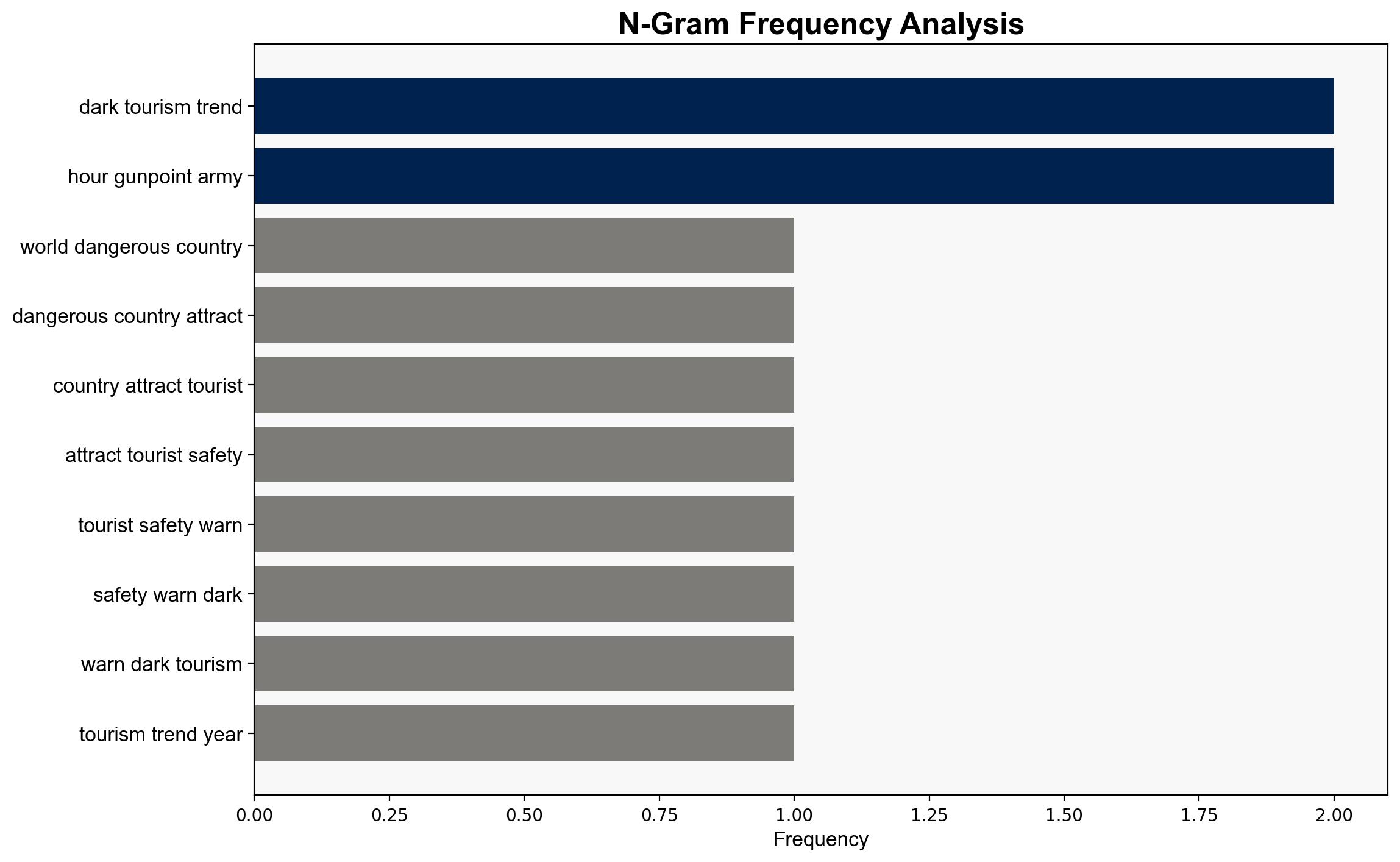One of the worlds most dangerous countries is still attracting tourists despite safety warnings in dark tourism trend – New York Post
Published on: 2025-04-23
Intelligence Report: One of the World’s Most Dangerous Countries is Still Attracting Tourists Despite Safety Warnings in Dark Tourism Trend – New York Post
1. BLUF (Bottom Line Up Front)
Despite high-level travel advisories and ongoing security threats, Libya is experiencing an increase in tourism driven by a trend known as dark tourism. This trend involves tourists seeking experiences in locations associated with danger or historical tragedies. The persistence of this trend poses potential risks to both tourists and host nations, necessitating a reassessment of current travel advisories and international cooperation on safety measures.
2. Detailed Analysis
The following structured analytic techniques have been applied to ensure methodological consistency:
Scenario Analysis
The ongoing instability in Libya, characterized by rival factions vying for control, presents several scenarios:
– Continued conflict may lead to increased violence and further destabilization.
– A potential stabilization, possibly through international mediation, could reduce immediate threats but may not eliminate underlying tensions.
Key Assumptions Check
It is assumed that tourists are aware of the risks but are motivated by the allure of danger or unique experiences. This assumption needs verification as it may overlook the influence of misinformation or inadequate advisory dissemination.
Indicators Development
Key indicators include:
– Changes in travel advisory levels.
– Reports of incidents involving tourists.
– Diplomatic communications or interventions regarding travel safety.
3. Implications and Strategic Risks
The rise in dark tourism to Libya could exacerbate existing security challenges, potentially straining local resources and increasing the risk of international incidents. This trend may also embolden other high-risk destinations to attract tourists, complicating global security efforts.
4. Recommendations and Outlook
- Enhance international collaboration to standardize travel advisories and improve information dissemination to potential tourists.
- Encourage the development of safer tourism alternatives that highlight cultural and historical aspects without exposing tourists to undue risk.
- Scenario-based projections:
- Best Case: Stabilization efforts succeed, reducing conflict and enabling safer tourism.
- Worst Case: Escalation of violence leads to international incidents involving tourists.
- Most Likely: Continued instability with sporadic tourist incidents, maintaining current risk levels.
5. Key Individuals and Entities
– Emily Hudson: A content creator who visited Libya, highlighting the allure of dark tourism.
– Daniel Pinto: A tourist who experienced a security incident in Libya, underscoring the risks involved.
6. Thematic Tags
(‘national security threats, tourism safety, regional focus, travel advisories’)





